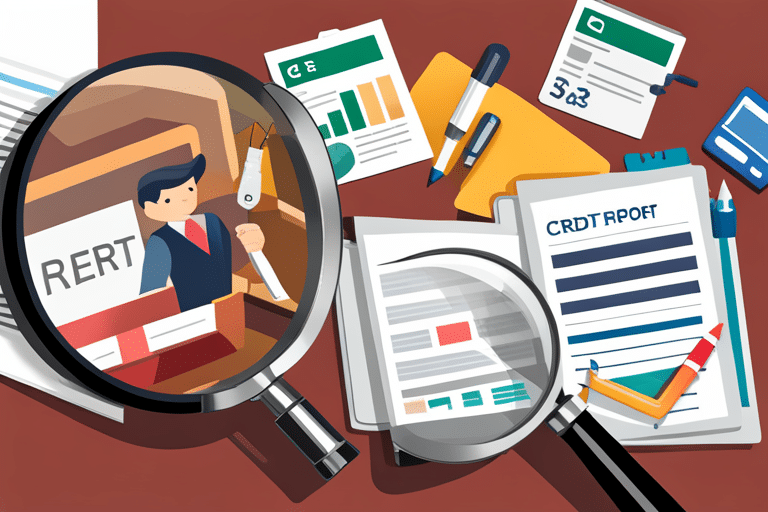Hey, you! Tired of those pesky negative items dragging down your credit report? Well, fear not, because we’ve got the ultimate guide to help you remove them once and for all.
Ever wondered how to turn that credit frown upside down? We’ve got the answers you need. From identifying errors to crafting effective dispute letters, we’ll walk you through every step of the process.
So buckle up and get ready to take control of your credit destiny!
Key Takeaways
- Negative items on your credit report can make lenders see you as a risky borrower.
- Request a copy of your credit report from all three major credit bureaus and examine each entry for errors or discrepancies.
- Gather evidence and write a dispute letter to the creditor and credit bureau to resolve credit report inaccuracies.
- Familiarize yourself with consumer protection laws and negotiate with creditors to find solutions and improve your credit standing.
Understanding the Impact of Negative Items on Your Credit Report
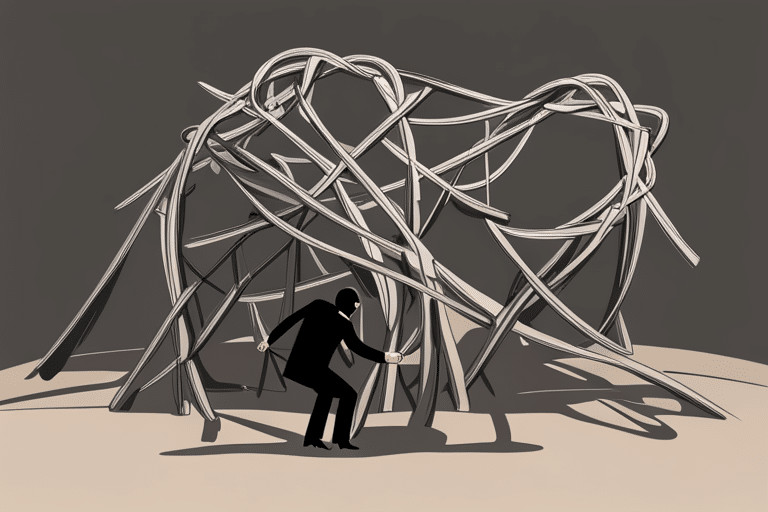
You should understand how negative items can negatively impact your credit report. I mean, you don’t want your credit report to look like a sad, neglected puppy at the pound, do you? Negative items are like stains on your credit score that just won’t come out no matter how hard you scrub. They can include late payments, collections, bankruptcies, and even those pesky tax liens. These blemishes can make lenders see you as a risky borrower, kind of like that one friend who always forgets their wallet when it’s time to split the bill.
Now let’s talk about credit scores for a minute. Think of them as the GPA of your financial life. A high credit score shows that you’re responsible with money and have excellent financial habits. On the other hand, a low credit score is like getting an F in Personal Finance 101 – not exactly something to brag about at parties.
One major factor that affects your credit score is your credit utilization. It’s basically the ratio of how much available credit you’re using compared to your total available credit limits. If you max out all of your cards and start swiping left and right without any regard for budgeting or responsibility, well my friend, that’s going to hurt your score big time.
Now that we’ve covered understanding credit scores and the impact of credit utilization on them, it’s time to dive into the nitty-gritty details of reviewing your credit report for negative items. Trust me; it’ll be fun! Well maybe not rollercoaster-at-an-amusement-park fun but definitely interesting in its own way. So buckle up and get ready for some detective work!
Reviewing Your Credit Report for Negative Items

Start by carefully examining your credit report for any entries that could be harmful to your overall credit score. You know, those sneaky little negative items that can drag down your financial reputation faster than a toddler with a marker on a white wall. But fear not, my friend! With a keen eye and some determination, you can tackle these credit demons head-on and restore balance to your credit universe.
Here are three crucial steps to review your credit history like a seasoned detective:
-
Get Your Hands on the Report: Request a copy of your credit report from all three major credit bureaus – Experian, Equifax, and TransUnion. It’s like getting access to secret files that hold the key to unraveling the mysteries of your financial past.
-
Inspect Every Detail: Put on your CSI hat and dive into each entry on the report. Look for errors or discrepancies like accounts you never opened or payments you’ve made but aren’t reflected accurately. These inaccuracies are like red herrings leading you astray; it’s time to expose them!
-
Dispute Like A Pro: Don’t let those pesky errors ruin your good name! When you spot an error, gather evidence (like receipts or statements) and write a dispute letter to both the creditor and the respective credit bureau. Be polite yet firm in stating why you believe the item is incorrect.
With these steps under your belt, reviewing your credit history will feel less daunting than chasing after unicorns in search of pots of gold. Remember, persistence pays off when it comes to disputing credit errors and restoring order in the realm of personal finance mastery!
Identifying Errors and Inaccuracies in Your Credit Report
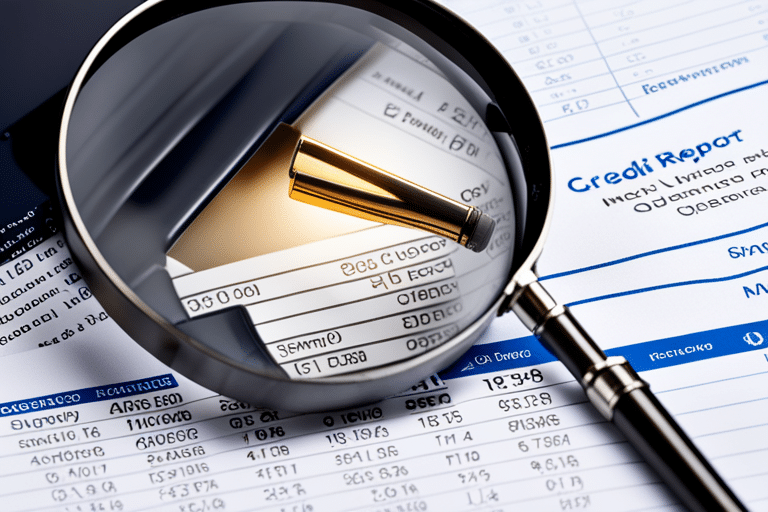
Alright, buckle up and get ready to dive into the wild world of credit report errors!
We’re about to embark on a journey where spotting these sneaky inaccuracies is like finding hidden treasures in a sea of financial mayhem.
But fear not, my friend, for armed with the right knowledge and a dash of humor, you’ll be able to navigate through this maze and resolve those pesky credit report inaccuracies with ease.
Spotting Credit Report Errors
There’s a simple way to identify errors on your credit report. Just follow these three steps and you’ll be well on your way to spotting those pesky inaccuracies:
-
Get a copy of your credit report: You can request a free copy from each of the three major credit bureaus – Equifax, Experian, and TransUnion. Reviewing all three reports is crucial because they may contain different information.
-
Carefully examine the details: Look for any suspicious or incorrect information such as accounts that don’t belong to you, late payments that were actually made on time, or incorrect personal details like addresses or social security numbers.
-
Document the errors: Make note of any mistakes you find and gather supporting documents that prove your case. This will be helpful when it comes time to dispute the errors with the credit bureaus.
Now that you know how to spot credit report errors with ease, it’s time to move on to resolving those pesky inaccuracies and improving your credit health!
Resolving Credit Report Inaccuracies
Once you’ve identified errors on your credit report, it’s important to take the necessary steps to resolve them.
Now, I know what you’re thinking – dealing with credit report disputes may not be the most exciting task in the world. But fear not, my friend! We’re here to make this process a little more bearable.
First things first, gather all the evidence you need to support your claim. This could be anything from receipts to statements or even a signed affidavit from a unicorn (just kidding… but that would be pretty cool).
Next, draft a dispute letter that clearly outlines the errors and provides any supporting documentation. And remember, when it comes to resolving credit report inaccuracies, patience is key. It might take some time for the credit bureaus to investigate and make corrections. So hang in there!
Before you know it, those pesky mistakes will be a thing of the past and your credit score will thank you.
And speaking of credit scores…
Disputing Inaccurate Negative Items With Credit Bureaus

If you want to remove inaccurate negative items from your credit report, you can start by disputing them with the credit bureaus. It’s like going into battle armed with the mighty sword of truth and justice.
Here are three steps to help you navigate through the credit dispute process:
-
Gather your evidence: Think of yourself as a detective on a mission to uncover the truth. Collect all the supporting documents that prove your case. This could include bank statements, payment receipts, or correspondence with creditors. The more evidence you have, the stronger your argument becomes.
-
Craft a persuasive letter: Now it’s time to unleash your inner Shakespeare (or at least your inner Hemingway). Write a clear and concise letter explaining why the negative item is incorrect and should be removed from your report. Use language that is assertive yet polite – no need to throw shade at those pesky credit bureaus.
-
Submit it like a boss: Once you’ve written your masterpiece, send it off to each of the three major credit bureaus – Equifax, Experian, and TransUnion – via certified mail with return receipt requested. Keep copies of everything for your records because hey, paper trails are cool too.
Remember, disputing credit errors requires patience and persistence. The wheels of bureaucracy may turn slowly but don’t let that discourage you! Stay proactive and follow up regularly until you see those negative items vanish into thin air.
Now go forth, noble warrior of good credit! With this knowledge in hand, there’s nothing stopping you from conquering those inaccuracies on your credit report like a true champion! May victory be yours!
Crafting Effective Dispute Letters to Credit Bureaus

Alright, my credit-savvy friend, it’s time to get crafty! No, I’m not talking about making arts and crafts (although that could be fun too), I’m talking about crafting effective dispute letters to those credit bureaus. These letters are your secret weapon in the battle against inaccurate negative items on your credit report.
Now, let’s dive into some strategies for successful credit disputes.
First things first, keep it concise and to the point. Credit bureaus are busy folks, so make sure your letter is clear and easy to understand. Use simple language that even a monkey wearing a tuxedo could comprehend.
Next up, provide evidence to back up your claims. You can’t just say ‘Hey credit bureau peeps, this negative item is totally wrong!’ You need to bring out the big guns – any supporting documents or proof you have that shows the information is incorrect.
And don’t forget about being polite! Remember, you’re asking these credit bureaus nicely (with a touch of assertiveness) to correct their mistakes. Honey catches more flies than vinegar, as they say.
So there you have it – some handy dandy tips for crafting effective dispute letters that will make those credit bureaus sit up and take notice. But wait! Before you run off with pen in hand (or fingers poised over the keyboard), there’s one more thing we need to cover: utilizing consumer protection laws to remove negative items from your credit report.
But fear not! We’ll dive into all of that juicy goodness in our next installment. So stay tuned and get ready for some serious knowledge dropping!
Utilizing Consumer Protection Laws to Remove Negative Items

Now let’s explore how you can leverage consumer protection laws to eliminate those pesky inaccuracies from your credit history. Utilizing statute rights and credit repair strategies, you have the power to fight back against those negative items that are dragging down your credit score. So grab your cape (or maybe just a cup of coffee) and let’s dive in!
-
Fair Credit Reporting Act (FCRA): This federal law gives you the right to dispute any inaccurate information on your credit report. It’s like having a superhero sidekick who swoops in to save the day! Use this power to challenge those pesky errors and watch them vanish.
-
Fair Debt Collection Practices Act (FDCPA): If debt collectors are hounding you like mosquitoes at a summer picnic, this law is here to protect you. It sets clear rules for how creditors can contact you and what they can say. With this knowledge, you’ll be able to swat away their annoying tactics.
-
Truth in Lending Act (TILA): Are mystery fees lurking on your credit card statement? TILA requires lenders to disclose all charges and terms upfront so there are no surprises hiding in the fine print. Don’t let sneaky fees sneak up on you – use TILA as your secret weapon!
By utilizing these consumer protection laws, you can become a master of credit repair strategies, wiping out those negative items faster than a cheetah chasing its prey.
And speaking of prey, next up we’ll tackle another beast: negotiating with creditors to remove negative items from your credit report. Get ready for some fierce negotiations as we take control of our financial destiny!
Negotiating With Creditors to Remove Negative Items

Ready to take charge of your credit history? Let’s dive into the art of negotiating with creditors to eliminate those pesky blemishes from your financial record.
Negotiating with creditors may sound intimidating, but fear not! With the right strategies and a sprinkle of charm, you can turn those creditor frowns upside down.
First things first, communication is key. Pick up that phone and dial your creditor’s number like a pro negotiator. Be polite yet assertive, making sure they understand your determination to resolve any outstanding issues. Remember, you catch more flies with honey than vinegar!
When negotiating, it’s important to have a game plan. Assess your financial situation and determine what you can afford to pay or settle. Don’t be afraid to propose creative solutions that work for both parties involved. Remember that negotiation is like a dance; sometimes you lead, sometimes they lead, but ultimately it’s all about finding common ground.
Now here comes the fun part: employing some clever tactics during these negotiations. You could try throwing in a little humor or telling an amusing story to lighten the mood and build rapport with the creditor. Who knows? They might just find themselves chuckling along and willing to work with you.
By mastering these negotiating strategies and effectively communicating with your creditors, you’ll soon see those negative items disappearing from your credit report like magic tricks at a circus.
But wait! There’s more! While negotiating is essential for removing negative items from your credit report, paying off or settling outstanding debts is another crucial step towards improving your credit standing…
[Transition sentence: So let’s put on our financial superhero capes and tackle the next section on paying off or settling outstanding debts!]
Paying Off or Settling Outstanding Debts to Improve Your Credit
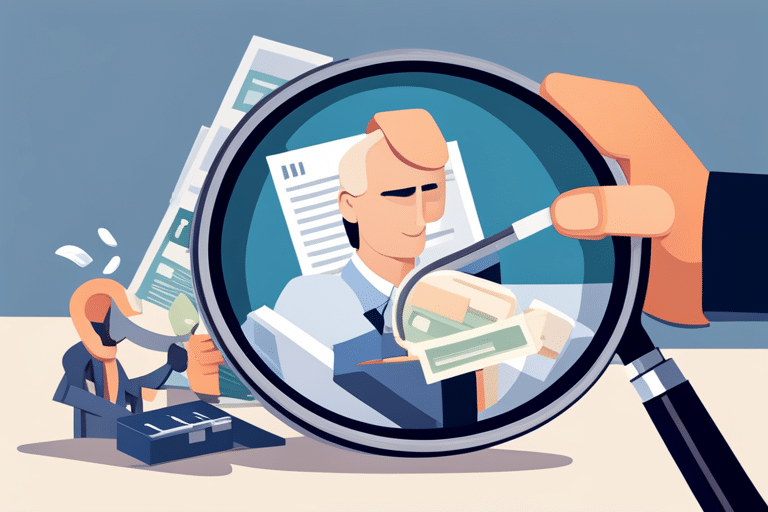
Are you ready to take control of your financial future by paying off or settling outstanding debts? It’s time to tackle those pesky bills and improve your credit score.
Here are three playful yet effective ways to pay off debts and boost your credit:
-
The Debt Snowball Method: Picture yourself on a snowy hill, ready to build the biggest snowman ever. Start by paying off the smallest debt first while making minimum payments on the rest. Once that’s done, roll that payment into the next smallest debt until everything is cleared away like melting snow.
-
The Debt Avalanche Method: Imagine being in an avalanche of debt, but instead of running away, you strategically conquer it like a fearless mountaineer. Begin with the highest interest rate debt and put extra effort into paying it down while maintaining minimum payments elsewhere. Once it’s conquered, move on to the next highest interest rate and keep going until you’re free from this icy grip.
-
The Debt Diet Plan: Think of your debts as unwanted pounds weighing you down. Create a budget that cuts unnecessary expenses like that expensive daily latte or online shopping spree (we know how tempting those can be!). Use those savings to make larger payments towards your debts each month, shedding those financial pounds one at a time.
By using these creative approaches to pay off debts, not only will you feel empowered but also see improvements in your credit score over time. So lace up those boots and start climbing towards a brighter financial future!
But what if there are negative items on your credit report that won’t budge no matter how hard you try? Don’t worry; we’ve got just the solution for you! Stay tuned for our next section on seeking professional help to remove negative items and finally achieve that pristine credit report you deserve!
Seeking Professional Help to Remove Negative Items
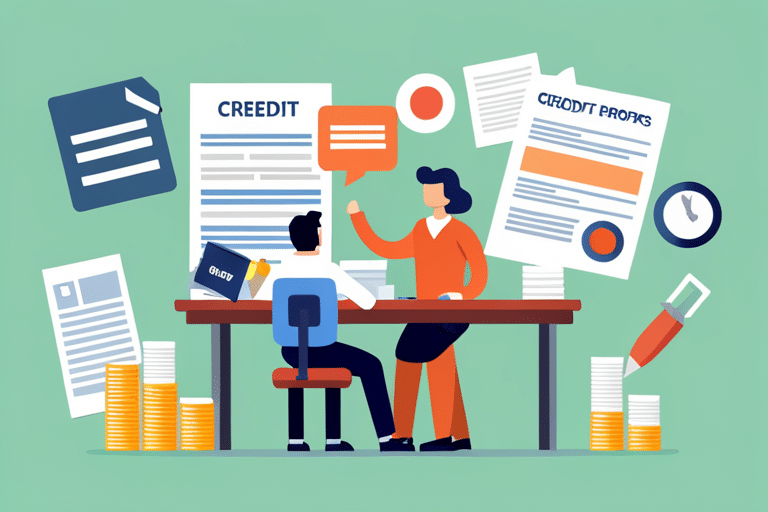
If you’re struggling to improve your credit, it might be time to consider professional assistance in eliminating those pesky marks on your financial record. Seeking legal assistance or credit repair services can be a game-changer when it comes to repairing your credit and getting back on track financially. Plus, who wouldn’t want some expert help in tackling this daunting task? It’s like having a personal trainer for your credit score!
Picture this: you’re at the top of a mountain, trying to reach the peak of great credit. But there are boulders blocking your path – those negative items on your report. You’ve tried pushing them aside, but they just won’t budge. That’s where the professionals come in. They have the tools and expertise to remove those obstacles and clear the way for you.
Now, I know what you’re thinking: ‘But won’t seeking professional help cost me an arm and a leg?’ Well, fear not! Many credit repair services offer affordable options that won’t break the bank. Think of it as an investment in yourself and your financial future.
Not only will these experts work tirelessly to remove those pesky marks from your report, but they’ll also guide you through the process with ease. They’ll analyze every line item, dispute inaccuracies, negotiate with creditors – all while keeping you informed along the way.
Monitoring Your Credit Report for Changes and Progress

Hey there, credit-savvy reader!
So you’ve taken the first step towards financial freedom by seeking professional help to remove those pesky negative items from your credit report.
Now it’s time to talk about the next crucial step: monitoring your credit report for changes and progress. Trust me, this is as important as keeping an eye on your favorite TV show – because finding those signs of progress can be just as satisfying as binge-watching that new series.
Tracking Credit Report Changes
To track changes in your credit report, you’ll want to regularly check your credit monitoring service. It’s like having a personal detective keeping an eye on your financial life. Here are three reasons why staying on top of your credit report is crucial:
-
Catching errors: Sometimes, the numbers get jumbled up and mistakes happen. By monitoring your credit report, you can catch any errors or inaccuracies that could be dragging down your score.
-
Spotting suspicious activity: Just like Sherlock Holmes sniffing out clues, credit monitoring helps you detect any signs of identity theft or fraudulent transactions before they wreak havoc on your finances.
-
Tracking progress: Credit history analysis allows you to see how far you’ve come in improving your credit score. It’s like watching a plant grow from a tiny seedling into a beautiful flower (minus the dirt under your fingernails).
Identifying Signs of Progress
Keep up the good work! You’ve made significant strides in improving your credit score, and it’s important to recognize and celebrate these signs of progress.
It’s like climbing a mountain of debt, one step at a time. As you continue on this journey, it’s crucial to measure your progress along the way. Think of it as checking the scales after a week of eating kale smoothies and avoiding those deliciously tempting donuts.
Look for signs like fewer late payments, lower credit utilization, or even that glorious moment when your credit score inches closer to ‘excellent’ than ‘just okay.’ These are all indications that you’re on the right track and deserve a pat on the back.
Importance of Monitoring
Monitoring your credit regularly is essential to staying informed about any changes or potential issues that may arise. Think of it like keeping an eye on your favorite TV show – you wouldn’t want to miss a single episode, would you? Well, the same goes for your credit.
By monitoring it, you can catch any unauthorized activity or errors that could negatively impact your credit score improvement journey. So grab some popcorn and let’s dive into why credit monitoring is so important:
-
Stay ahead of the game: Monitoring allows you to spot any suspicious activity early on, giving you the chance to take action before it becomes a full-blown problem.
-
Track your progress: Seeing how your credit score improves over time can be as satisfying as watching a character evolve in a captivating storyline.
-
Identify mistakes: Just like finding plot holes in a movie, monitoring helps you identify errors on your report and gives you the power to dispute them.
Maintaining Good Credit Habits to Prevent Negative Items in the Future

Make sure you’re consistently paying your bills on time to avoid any negative items appearing on your credit report in the future. Building a solid payment history is key to maintaining good credit habits and avoiding credit card debt. By staying vigilant and responsible, you can keep your credit report clean and ensure lenders see you as a reliable borrower.
To help you visualize the importance of maintaining good credit habits, here’s a handy table:
| Good Credit Habits | Negative Items |
|---|---|
| Paying bills on time | Late payments |
| Keeping credit utilization low | High balances |
| Regularly checking your credit report | Errors or inaccuracies |
Now, let’s take a lighthearted approach to understanding these habits. Imagine that your credit report is like an imaginary friend who keeps track of all your financial moves. If you consistently pay your bills on time, this imaginary friend would be thrilled! They would give you gold stars for being responsible and reliable.
On the other hand, if you neglect your bills and make late payments, this imaginary friend might turn into an annoying nag. They’ll start leaving sticky notes everywhere reminding you of your past mistakes. Trust me, no one wants that kind of nagging in their life!
By keeping an eye on your credit utilization and striving to keep it low, it’s like telling this imaginary friend that you know how to balance things out. You’re not overloading yourself with debt but rather managing it wisely.
Lastly, regularly checking your credit report is like having a secret agent spy on this imaginary friend. It ensures they don’t make any mistakes or falsely accuse you of something you didn’t do.
Frequently Asked Questions
How Long Does It Take for Negative Items to Be Removed From My Credit Report?
Removing negative items from your credit report can be a time-consuming process. However, there are ways to speed it up and avoid common mistakes. Let’s dive in and discover the secrets to credit report redemption!
Can I Remove Negative Items From My Credit Report Myself, or Do I Need Professional Help?
Sure, you can tackle DIY credit repair if you’re feeling adventurous. But beware, it’s like trying to fix a leaky pipe without a plumber. Consider the pros and cons of hiring a credit repair company before taking the plunge!
Will Paying off or Settling Outstanding Debts Automatically Remove Negative Items From My Credit Report?
Paying off or settling debts won’t automatically remove negative items. Credit utilization impacts your score, so it’s important to negotiate settlements with creditors. But hey, don’t worry! We’ll show you how to tackle it like a credit-savvy pro!
If I Have Already Disputed a Negative Item With a Credit Bureau and It Was Verified as Accurate, Can I Still Remove It?
Can you dispute a negative item multiple times with a credit bureau? If a verified negative item can’t be removed, how can you improve your credit score? These are common concerns for those seeking credit mastery.
Are There Any Consumer Protection Laws That Can Help Me Remove Negative Items From My Credit Report, Even if They Are Accurate?
Looking to give those negative items the boot? Well, you’re in luck! Consumer protection laws offer legal options to zap those pesky blemishes from your credit report, even if they’re as accurate as a GPS.
Conclusion
So there you have it, my friend! Removing those pesky negative items from your credit report doesn’t have to be a drag. With a little bit of effort and some clever tactics, you can turn that frown upside down and boost your credit score in no time.
Remember, staying on top of your credit report, disputing any errors like a boss, and paying off those debts with gusto are key steps towards financial freedom. And hey, if you need a helping hand along the way, don’t be afraid to call in the professionals.
Keep up those good credit habits and say farewell to negative items for good! Happy credit repairing!

